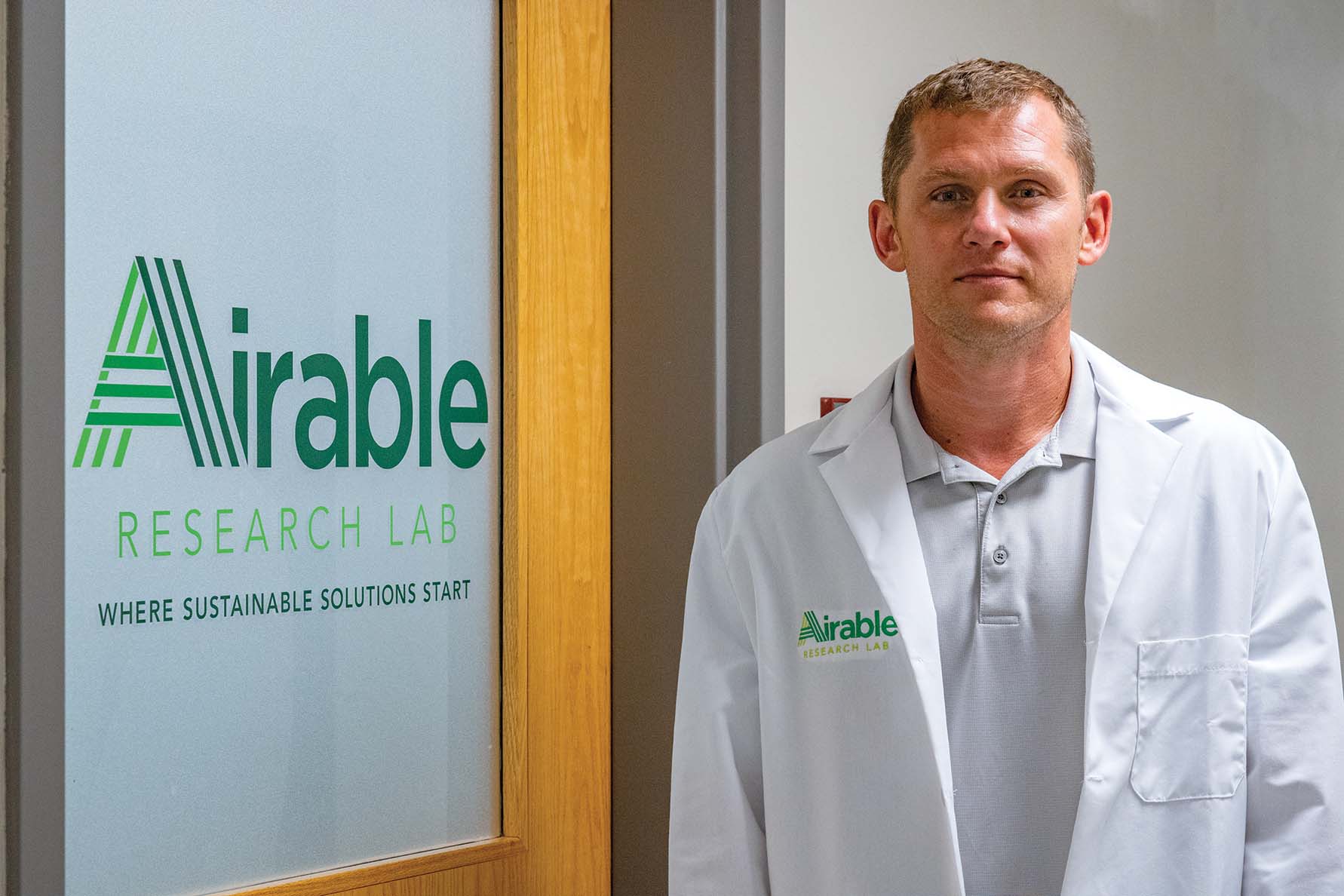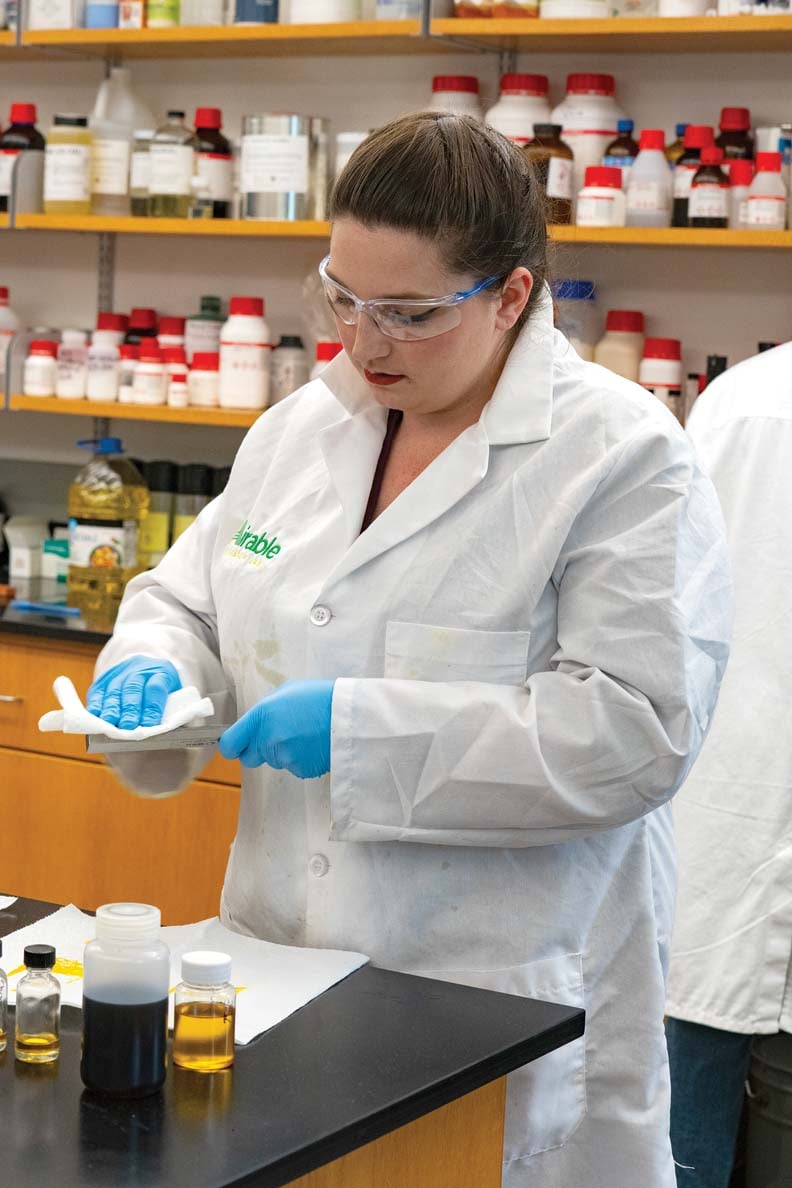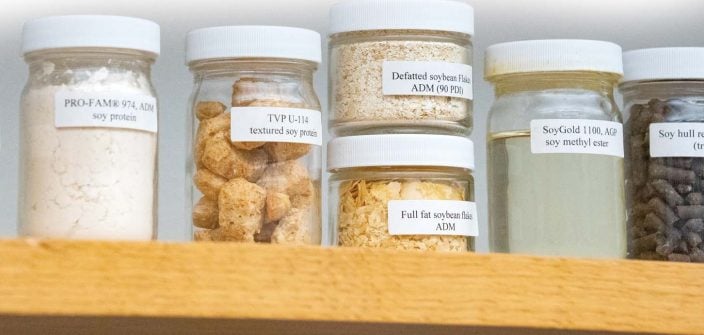Applications for Ohio Farm Bureau Health Plans now available
Members have three ways to apply: contacting a certified agent, calling 833-468-4280 or visiting ohiofarmbureauhealthplans.org.
Read More
Back in the 1930s, a green legume caught the eye of Henry Ford, inventor of the Model T. Having grown up on a farm, Ford was looking for ways to support agriculture and find the perfect crop to use in the automobile and other industries. Intrigued by the high level of oil in soybeans, he had a research laboratory built in Michigan, eventually leading to the development of soy-based oils and plastics used in Ford vehicles.
Today, the diversity of soybeans is impressive. Not only are they a protein-packed food and livestock feed, but they’re found in everything from cooking oils to candles to personal care items. Over 1,000 products are on the market with more on the way thanks to the Ohio Soybean Council and soybean checkoff, established in 1991 to enhance farmer profitability, including finding new uses for soybeans.
“Ohio has been at the forefront of developing new green and sustainable products made from soybeans. This effort is driven by farmers — they want these new products and are paying for the research to develop them through the checkoff fund,” said Barry McGraw, research and development director of the Ohio Soybean Council.
Every year, Ohio soybean farmers invest 0.5% of the net market price for each bushel of soybeans sold. Half of the funds stay in Ohio and the rest go to the United Soybean Board. The soybean checkoff annually generates between $4.5 million to $7.5 million and is earmarked for education and research and development. The Ohio Soybean Council has been so successful in developing new products that it’s been honored 10 times by the R&D 100 Awards programs, which are the “Oscars” of innovation.
Helping lead the way is McGraw, a long-time Battelle researcher who is not only a scientist but familiar with the complicated patent process. Royalties from patented products have generated more than $1.3 million for the Ohio Soybean Council. The money is earmarked for college scholarships as well as research and development, and last year the 16 farmers on the council’s board voted to invest in their own laboratory at Ohio Wesleyan University.
“Having our own lab will allow us to cut out the middleman and have more control over the product. The last thing our farmers want is for the checkoff money to sit and collect dust — they want results,” said Kirk Merritt, executive director of the Ohio Soybean Council.
Agreeing was Jeff Magyar, an Ashtabula County Farm Bureau trustee who also serves on the national United Soybean Board and the Ohio Soybean Council.
“It’s exciting for me as a soybean farmer to see us invest in our own research and development lab,” he said. “The startup is 100% checkoff money and no other state is doing this. We saw the need to develop the technology more quickly and efficiently and do it in house. From inventing to partnering to commercializing – we’re doing it all.”

To help get the word out about its new Airable Research Lab, Ohio Soybean Council leaders plan to attend several county Farm Bureau annual meetings to describe how the checkoff works and explore partnership opportunities in new products.
“Farm Bureau is the best way to get the message out to local farmers about not just our checkoff but everything,” said Magyar, who has a fourth generation farm. “Farm Bureau has a lot of influence. I know if I talk to my county commissioners about something, they want to know how Farm Bureau thinks — they really pay attention to Farm Bureau.”
Magyar, who grows food grade soybeans that are shipped to Japan, said having a diverse market for soybeans is important for Ohio farmers, especially if there are trade issues between the United States and other countries. About 60% of Ohio soybeans are exported, and they’re the state’s No. 1 agricultural export, according to Merritt. The soybean industry worked closely with Farm Bureau on passage of the United States-Mexico-Canada Agreement, which will help provide market stability for farmers. Mexico is the United States’ second largest market for whole soybeans, meal and oil and Canada the fourth largest for soybean meal.
“We have a long-term partnership with Farm Bureau that we really value and try to strengthen,” Merritt said.

Magyar, who has hosted trade delegations on his farm as well as visited Japan with the soybean industry, said the value of Farm Bureau goes well beyond trade. He praised Ohio Farm Bureau for being a leader in addressing water quality concerns, saying the organization pushed for testing and monitoring of tributaries that lead into Lake Erie where harmful algal blooms have threatened the quality of the Great Lakes. The county Farm Bureau’s annual Ag Day has helped teach students about where their food, fiber and fuel comes from, and a grain bin safety workshop hosted on his farm helped teach farmers and first responders about the dangers and prevention of grain bin entrapments.
This year, Farm Bureau partnered with the Ohio Soybean Association and the American Soybean Association to help soybean farmers who were affected by a federal appeals court ruling that abruptly prohibited the use of a popular weed killer. The organizations worked together in the effort to successfully argue that farmers who had already purchased three dicamba products be allowed to use their existing stock this summer.
Farm Bureau has long advocated the importance of crop insurance and last year was the perfect example of why this risk management tool is critical for farmers, Merritt said.
“Last year a record number of acres weren’t planted because of rain, and farmers were able to at least make up some of the losses through their crop insurance,” he said. “This is a great example of working with Farm Bureau and others to make sure that safety net is there when farmers really need it.”


Members have three ways to apply: contacting a certified agent, calling 833-468-4280 or visiting ohiofarmbureauhealthplans.org.
Read More

Bill Patterson, Cy Prettyman and Adele Flynn will continue to serve as officers for Ohio Farm Bureau Federation.
Read More

Delegates discussed many topics impacting agriculture including farmland preservation, local foods, and succession planning.
Read More

Twenty-six farmers govern the state’s largest farm and food organization.
Read More

The 2025 recipients are Fred Cooke (posthumous) of Richland County, Marvin Dietsch of Williams County, Steven Knollman of Hamilton County and Michele Miller (posthumous) of Ottawa County.
Read More

Nathan and Jill Parriman grow seasonal crops, including Christmas trees, pumpkins and cut flowers, providing U-cut experiences that invite customers to engage directly with agriculture.
Read More

The 2025 Distinguished Service Award recipients are Craig Adams, Mike Townsley, and Kellogg Farms, Kurt Farms and Stateler Family Farms.
Read More

Ohio Farm Bureau Treasurer Adele Flynn participated in the meeting, representing Ohio farmers.
Read More

For Ohio and PJM region, the outlook is reassuring—ample reserves and strong planning should keep the power on.
Read More

The average price for a classic holiday feast for 10 in Ohio will cost $55.87.
Read More